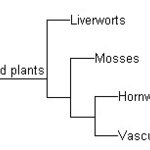Evolution

When I was a teenager, my two scientific passions were astronomy and botany. However, at my school in the early 1960s, one could either do A-levels in Mathematics - Physics - Chemistry (Science A) or Chemistry – Botany - Zoology (Science B). I chose the former option, being very much put off by medicine which was more or less entailed with the latter. Botany still is a scientific passion – if I were time-transported back to the Jurassic I would be eager to investigate the flora, leaving others of the party to keep a watch-out for dinosaurs.
So I was happy when…

What's ailing biology?
Wilson da Silva, Editor-in-Chief of COSMOS, a science publication in Australia, was attending a lecture by Freeman Dyson lecture at the Perimeter Institute in Canada when Dyson said, "It's sad but true that most discoveries in biology are made by physicists."
Hubris? Dyson is a theoretical physicist and mathematician, famous for his work in quantum field theory and for being a modern day contrarian - as you would expect a "Scientist As Rebel" to be in that old-school, fiercely independent intellectual way not really possible in today's government-funded science…

In The Selfish Gene (1976), Richard Dawkins introduced the word ‘meme’ (derived from the Greek word mimema, roughly translates as ‘something imitated’) to denote “a unit of cultural transmission, or a unit of imitation.”
It turned out to be a good meme itself. Since its introduction, it has spread quickly, and, by now, most people have been exposed to the term somewhere, from newspapers to conversations with friends and relatives to academic publications. In the past few decades, memes have become a field of study.
Increasingly, phylogenetic methods and techniques, originally exclusively…

The human face is, by far, one of the most complex features that has stumped the scientists in the field of developmental science. The recent debates on human face transplant makes it obvious that there is a lot more to the story. Just like fingerprints, no two human faces are alike. Even twins have striking dissimilarities. In fact, every human lip has a unique lip print!
Semantics aside, human faces are generally accidents of development. The faces, we consider as beautiful and pretty, are a result of assembly of primary features. So let us understand faces, human faces that's all around us…

In a recent set of posts there was a discussion about evolutionary psychology and how it can be used to explain various behaviors. However, one of the fundamental challenges raised is whether the references to biological phenomenon are, in fact, settled issues and whether they should serve as a basis for drawing additional conclusions. As a result, I wanted to focus on one particular paragraph from one paper to illustrate the problem.
"However, costly signaling theory is only beginning to influence thinking in psychology (Miller, 2000). The classic example of a costly signal is…

Aggression in mating males is a successful reproductive strategy for individuals but a numerical model says it can drive a species to extinction,
Evolutionary biologists have long debated whether the behavior of the individual is able to influence processes on a population or species level but the possibility of selection at the species level remains controversial. Using a mathematical model, an international team of researchers now say that aggressive male sexual behavior not only harms the female, but can also cause entire populations to die out.
For their study, the scientists…

As a teenager, in the early 1960s, I developed an interest in botany, and in particular ferns and the so-called “fern-allies”. So, living in the drier South-East of England, I welcomed trips to places where these plants about, such as Wales, mountainous Scotland, and Cornwall. But today I am travelling through time, showing how our knowledge of this branch of the Plant Kingdom has expanded over the last 200 years or so. In his system for classification of all known plants and animals, Carolus Linnaeus (1707–1778) divided the plant kingdom into 25 classes, one of which…

Rice, the eponymous food of Asia, originated in China, and domesticated rice may have first appeared as far back as approximately 9,000 years ago in the Yangtze Valley of China. Previous research suggested domesticated rice may have two points of origin, India as well as China.
The genome researchers used large-scale gene re-sequencing to re-assess the phylogeny, or evolutionary history, of domesticated rice using previously published datasets, some of which have been used to argue that indica and japonica rice have separate origins. Using newer computer algorithms, however, the researchers…

A paper published in the Proceedings of the National Academy of Sciences says the mosquito branched off the same evolutionary tree as the house fly around 220 million years ago. Though only a few species of flies gain public attention - pests like house flies, March flies and mosquitoes – there are 152,000 named species of flies, representing around 10 per cent of all species on Earth. The March fly branched off some 175 million years ago, while the common house fly branched off about 50 million years ago.
Flies originated in wet environments and as they evolved they adapted to…